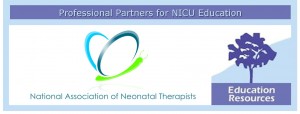Acute and Critical Care Therapy Online Courses
We are excited to share with you these new sessions just added to our growing library of online CEU courses.
Supplement your learning with these evidence-based online courses from expert Steven Sadowsky, PT, RRT, MS, CCS Recorded live at his “Treating Patients in Acute Care and Critical-Care Settings” Course
- Improve Functional Outcomes
- Assess Stability
- Prevent Readmission
- Early Mobilization and Progression
Facilitate team collaboration, reduce length of stay, navigate reimbursement and
improve patient satisfaction
(Click on each title for full description, CEU information and registration details)
Clinical Decision Making in Acute Care
Focus on Cardiopulmonary Issues
$79
Lines, Tubes, Ventilators and Diagnostic Screening for Stability vs Instability:
Cardiopulmonary Examination and Monitoring
$99
Auscultation LAB:
Heart and Breath Sounds: Practicum
$79
Clinical Physiological Monitoring:
Lab Values, Case Study, Tests
$79
Acute Care and ICU Pharmacology:
Implications for Early Mobilization and Functional Outcomes
$59
Register for the complete online series for $309
(a saving of $86)– 12hrs, 1.2 CEUs
OR
Register for individual sessions
Includes downloadable handouts & access for an entire year
This series is recommended for physical therapists, occupational therapists, physical therapist assistants, and occupational therapist assistants who treat patients in acute care settings, home health settings, skilled nursing facilities, inpatient settings, and outpatient settings. Course participants can hone their skills and sharpen their decision-making at their convenience.
- Engaging CEUs on demand
- Learn at your convenience
- Advance and hone your skills
- Expand your knowledge
- Learn from leading experts
Each individual session meets the criteria for 1.5-3.5 contact hours (0.15-0.35 CEUs)
CEU certificates will be downloadable following successful completion of a post test.
We know that for some of you, it may not be possible to attend every conference you would like, and for others, supplemental materials will enhance your learning when attending our highly regarded live programs. Still others have told us that they want to share the material they have learned at one of our live courses with their colleagues, administrators and the families they serve. That is why we have enhanced our new e-Learning program taught by leading experts in their fields.
Please visit our FAQ Page and CEU Page for more information.
]]>




